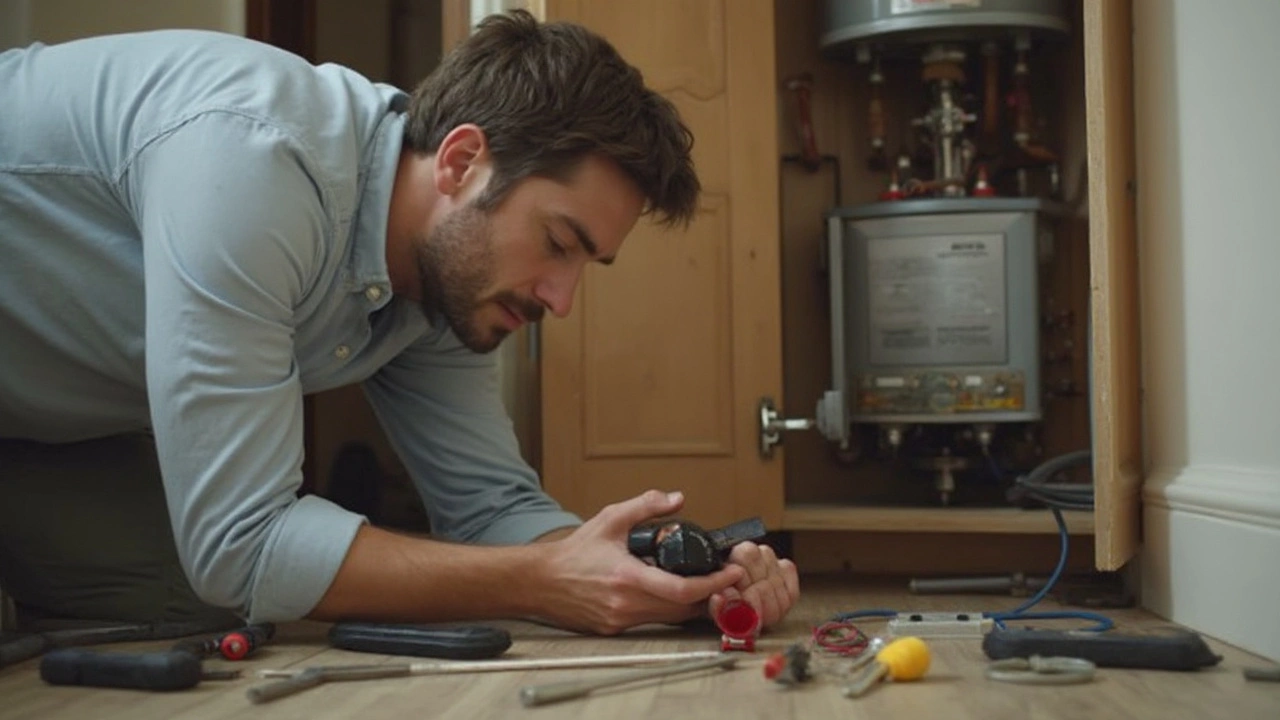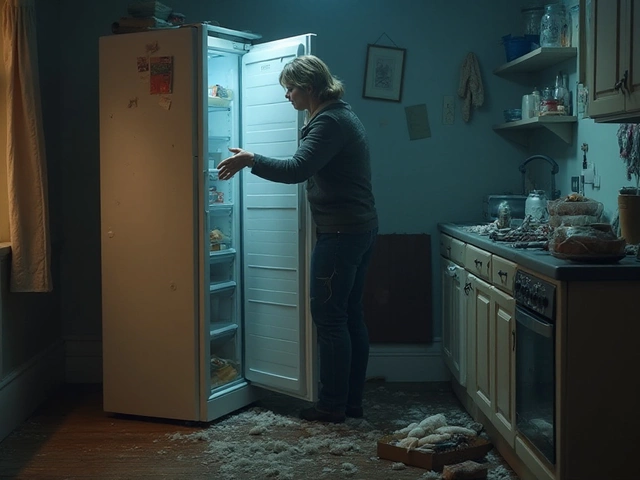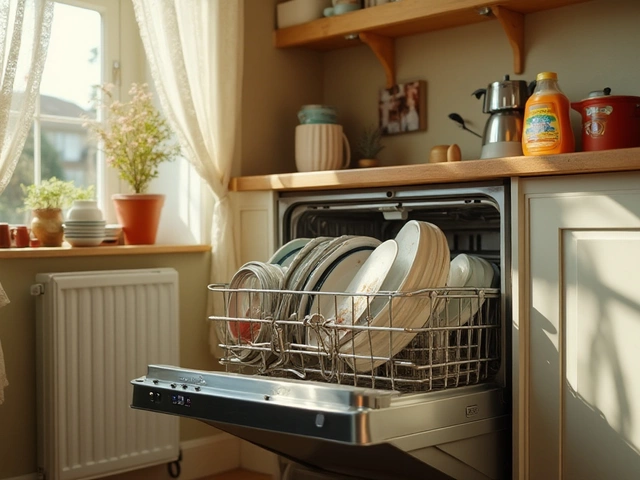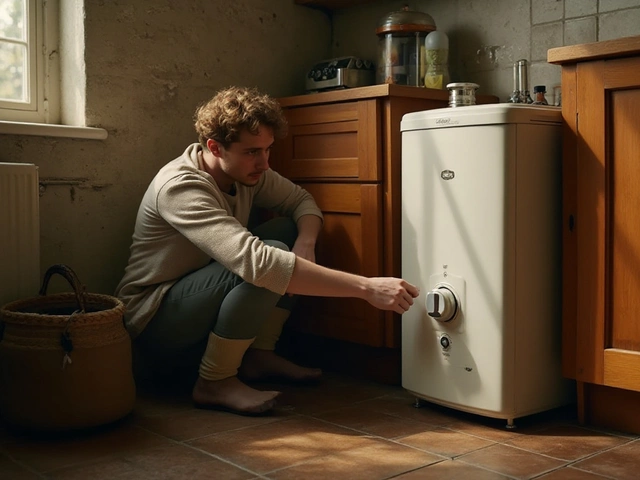The first time your shower turns cold halfway through, you realize how crucial that clunky water heater really is. Most folks think water heaters are simple boxes, but when something inside fails, it throws your whole routine out of whack. If you’re wondering where it usually goes wrong, you’re not alone—and you’re definitely not the only one hunting for answers, especially on a Monday morning with soap still in your hair.
Here’s the bottom line: the most common trouble spots on a water heater are the heating elements (or burners if it’s gas), the thermostat, and that mysterious anode rod hidden inside the tank. Each part can cause its own flavor of misery—ice-cold showers, smelly water, or even leaks that leave your garage looking like a kiddie pool. Not always easy to spot until it’s too late.
Staying ahead of water heater problems is a lot easier if you know what usually fails first and what it looks like right before things go south. That’s what we’ll dig into here. A little knowledge now can mean fewer repairs and a lot less hassle down the road.
- Most Common Water Heater Problems
- Why Do These Parts Fail?
- Warning Signs to Watch For
- DIY Fixes and When to Call for Help
Most Common Water Heater Problems
When a water heater calls it quits, a handful of usual suspects are almost always to blame. Knowing what fails most often makes troubleshooting quicker—and might just save you an emergency call.
- Heating Element Failure: In electric water heaters, the heating elements can burn out, especially if there’s a lot of sediment buildup or if the system has to work overtime. You’ll mostly notice lukewarm water, no hot water at all, or water that seems to run cold way too fast. Gas water heaters face something similar—the burner can go bad from clogs or years of use.
- Thermostat Issues: Thermostats are the brain behind your water heater. If one breaks, you’ll either get water that’s too hot, too cold, or keeps fluctuating. Sometimes the water will even scald you in the middle of a shower—not fun.
- Anode Rod Deterioration: The anode rod is a metal core that helps slow down rust inside the tank. If it wears down too much (and they all do over time), the tank itself starts to rust, which can lead to leaks or that weird metallic taste in your water.
- Tank Leaks: Corrosion from a worn-out anode rod or just old age can make the tank spring leaks. Unfortunately, when the tank itself fails, repairs usually mean a full replacement, not a cheap fix.
- Sediment Buildup: Minerals in the water, like calcium and lime, settle on the bottom of the tank. Too much buildup can ruin the heating element, make popping noises, and even clog pipes. In hard water areas, this builds up much faster.
Check out how these problems stack up in the real world:
| Problem | Common Symptoms | Typical Fix |
|---|---|---|
| Heating Element/Burner Failure | No hot water or inconsistent temps | Replace element/burner |
| Thermostat Failure | Water too hot/cold, fluctuating temps | Replace thermostat |
| Anode Rod Worn | Rusty water, leaks | Replace rod, flush tank |
| Sediment Buildup | Noises, less hot water | Flush tank regularly |
Most problems start small, so catching them early keeps your water heater repair bills down and your showers steamy.
Why Do These Parts Fail?
It’s not bad luck—water heaters break down for a reason. The main troublemakers are the same in most homes, whether you’ve got a gas or electric model. Here’s what’s really going on inside that tank:
Heating elements (or gas burners) are easy targets. For electric models, the metal heating rods can get coated with minerals if your water is hard. Eventually, they overheat and burn out since they’re working harder to do their job. Gas burners face a different problem: dust and grime. If the flame seems weak or flickers, a dirty burner or a bad thermocouple could be the culprit. Both issues mean your water never quite gets hot enough.
The thermostat is basically the brain of your water heater. It tells the unit when to heat up and when to chill out. If it stops working, the tank can’t keep water at the right temperature. Sometimes, you’ll notice water that’s scalding one moment or lukewarm the next. Thermostats can wear out over time, usually because of those constant cycles it goes through every day.
Ever heard of the anode rod? Most people haven’t, but it’s the unsung hero fighting off rust. It’s made of magnesium or aluminum and gradually allows itself to corrode so your tank doesn’t. Once the rod is gone, the tank itself starts rusting from the inside—and leaks aren’t far behind.
Don’t forget about tank issues. Tanks rust out faster if your water is extra hard or full of sediment. The more gunk that settles at the bottom, the harder the heater has to work and the more wear on every part. On top of that, very high water pressure and overheating can literally crack the tank or cause tiny leaks to form.
- Mineral buildup from hard water is the top reason for heating element failure.
- Thermostats go bad mostly from constant use and power surges.
- Anode rods dissolve as part of the normal process but need checking every couple years.
- Sediment build-up speeds up tank breakdown—flushing the tank yearly can prevent this.
Check out this quick breakdown on how long key water heater parts usually last on average:
| Part | Average Lifespan (Years) |
|---|---|
| Heating Element/Burner | 6-10 |
| Thermostat | 5-8 |
| Anode Rod | 3-5 |
| Tank | 8-12 |
Spotting these issues early is really your best shot at avoiding full-blown water heater repair. A little upkeep here and there beats waking up to a freezing shower any day.
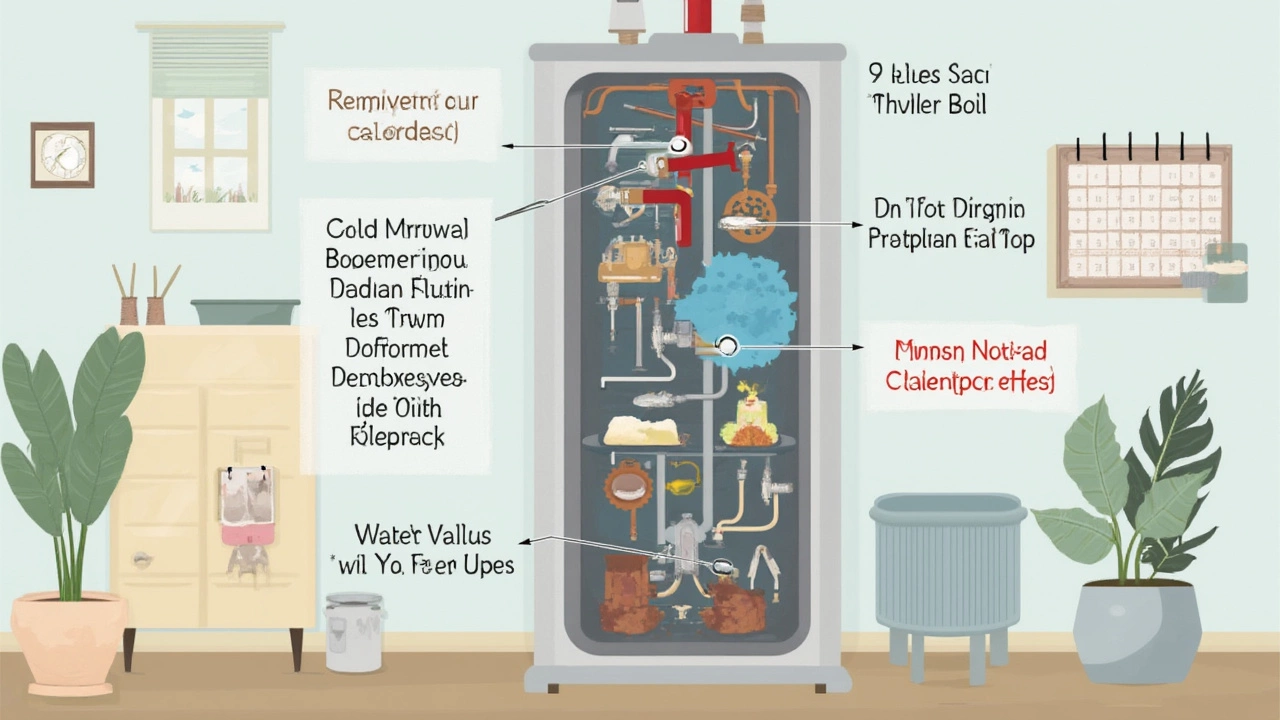
Warning Signs to Watch For
When a water heater is on its way out, it rarely goes quietly. It usually leaves clues—sometimes obvious, sometimes not. Most people notice something’s off when their morning routine changes, usually in the form of cooler showers or weird noises.
Here’s what to look for before a small water heater repair turns into a major headache:
- Inconsistent hot water: If you’re getting random bursts of hot and cold, or your hot water runs out way faster than it used to, check your thermostat or heating element. These are the parts that usually give out first.
- Strange noises: Popping, banging, or rumbling from the tank usually means sediment has built up inside. This sediment cooks on your heating element or burner, making them work overtime and risking early failure.
- Rusty or discolored water: If brown or red-tinted water comes out when you turn on hot water, the anode rod might be spent or your tank is corroding from the inside. That’s a clear call to action; nobody wants rusty water in their coffee cup.
- Water pooling around the tank: Even a small leak is serious. A failing pressure relief valve, a cracked tank, or loose connections can all be to blame. Ignoring it usually means water damage or a full-on tank burst down the road.
- Smelly or foul-tasting water: A rotten-egg odor often means bacteria is reacting with the anode rod. It’s annoying but also pretty common as these rods wear out and need to be replaced every few years.
Just to give you an idea of how common these issues are, here’s a quick look at what usually fails first:
| Part | Common Issue | Estimated Lifespan |
|---|---|---|
| Heating Element (Electric) | No hot water or inconsistent temp | 6-8 years |
| Thermostat | Water too hot/cold | 5-10 years |
| Anode Rod | Rust, smelly water | 3-5 years |
| Tank | Leaks, corrosion | 8-12 years |
Staying alert to these issues can save you a world of trouble and help bump your water heater closer to the upper end of its lifespan. If you spot any of these red flags, it’s better to act fast than to hope things just sort themselves out.
DIY Fixes and When to Call for Help
Tackling a broken water heater isn’t as scary as it sounds—some jobs take no more than a wrench and a little patience. Let’s hit the most common issues you can handle and clear signs it’s time to hand things off to a pro.
- No hot water: For electric models, start by checking the breaker. If it’s tripped, reset it. Still cold? The heating element might be toast. Swapping out a heating element is a job many DIYers can finish in about an hour. Just remember to flip off the power first. On gas heaters, check the pilot light. If it’s out, relight it following the instructions on the tank. If it keeps going out, something’s up with the thermocouple.
- Low or inconsistent temperature: Try adjusting the thermostat—sometimes it’s accidentally bumped. Most folks keep it between 120°F and 140°F. If it won’t hold a set temp, that thermostat could be dying and swapping it out is a cheap fix if you follow the directions that come with the part.
- Smelly or rusty water: This usually means the anode rod is shot, letting corrosion take over inside the tank. Turning off the water and power, draining the tank, and replacing the rod can solve the problem. The new rod costs $20–$30 and a socket wrench.
- Leaking water: First, double-check hoses and fittings for loose connections. Sometimes tightening a fitting is all it takes. If the leak’s from the tank itself, that’s game over—the tank can’t be fixed, and you’ll need a new water heater.
Wondering when DIY stops making sense? Here’s a cheat sheet. If you smell gas, can’t stop water from leaking out of the tank, or mess with electrical connections and things still won’t work, don’t risk it. Call a licensed water heater repair pro. Trying to patch a doomed tank or diagnose mysterious gas issues can get dangerous fast.
For a snapshot of what folks typically tackle and when they wave the white flag, here’s a quick look:
| Issue | DIY? | Pro Needed? |
|---|---|---|
| Heating element | Yes | If electrical issues persist |
| Pilot light relight | Yes | If won’t stay lit |
| Anode rod replacement | Yes | Rusty leaks after swap |
| Thermostat replacement | Yes | If new part fails |
| Leaky tank (main body) | No | Yes—full replacement |
| Gas smell | No | Yes—immediate |
No shame in picking up the phone for expert water heater repair when things get hairy. Better safe than flooded—or worse!

